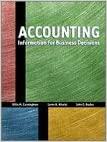Question
E7-7 (Algo) Analyzing and Interpreting the Financial Statement Effects of LIFO and FIFO LO7-2, 7-3 [The following information applies to the questions displayed below.] Emily
E7-7 (Algo) Analyzing and Interpreting the Financial Statement Effects of LIFO and FIFO LO7-2, 7-3
[The following information applies to the questions displayed below.]
Emily Company uses a periodic inventory system. At the end of the annual accounting period, December 31 of the current year, the accounting records provided the following information for product 2:
| Units | Unit Cost | ||||||||
| Inventory, December 31, prior year | 2,950 | $ | 14 | ||||||
| For the current year: | |||||||||
| Purchase, April 11 | 8,920 | 15 | |||||||
| Purchase, June 1 | 7,860 | 20 | |||||||
| Sales ($54 each) | 10,860 | ||||||||
| Operating expenses (excluding income tax expense) | $ | 189,500 | |||||||
E7-7 Part 1
Required:
1. Prepare a separate income statement through pretax income that details cost of goods sold for (a) Case A: FIFO and (b) Case B: LIFO.
| Cost of goods sold: | ||||
| not attempted | $41,300selected answer correct | not attempted | not attempted | not attempted |
| not attempted | 124,880selected answer incorrect | not attempted | not attempted | not attempted |
| not attempted | not attempted | not attempted | not attempted | not attempted |
| Goods available for sale | 166,180 | 0 | ||
| not attempted | not attempted | not attempted | not attempted | not attempted |
| not attempted | not attempted | not attempted | not attempted | not attempted |
| Cost of goods sold | not attempted | not attempted | ||
2.
E7-7 (Algo) Analyzing and Interpreting the Financial Statement Effects of LIFO and FIFO LO7-2, 7-3
[The following information applies to the questions displayed below.]
Emily Company uses a periodic inventory system. At the end of the annual accounting period, December 31 of the current year, the accounting records provided the following information for product 2:
| Units | Unit Cost | ||||||||
| Inventory, December 31, prior year | 2,950 | $ | 14 | ||||||
| For the current year: | |||||||||
| Purchase, April 11 | 8,920 | 15 | |||||||
| Purchase, June 1 | 7,860 | 20 | |||||||
| Sales ($54 each) | 10,860 | ||||||||
| Operating expenses (excluding income tax expense) | $ | 189,500 | |||||||
E7-7 Part 2
2. Compute the difference between the pretax income and the ending inventory amount for the two cases.
3.
7-7 (Algo) Analyzing and Interpreting the Financial Statement Effects of LIFO and FIFO LO7-2, 7-3
[The following information applies to the questions displayed below.]
Emily Company uses a periodic inventory system. At the end of the annual accounting period, December 31 of the current year, the accounting records provided the following information for product 2:
| Units | Unit Cost | ||||||||
| Inventory, December 31, prior year | 2,950 | $ | 14 | ||||||
| For the current year: | |||||||||
| Purchase, April 11 | 8,920 | 15 | |||||||
| Purchase, June 1 | 7,860 | 20 | |||||||
| Sales ($54 each) | 10,860 | ||||||||
| Operating expenses (excluding income tax expense) | $ | 189,500 | |||||||
E7-7 Part 3
3. Which inventory costing method may be preferred for income tax purposes?
4.
E7-18 (Algo) Analyzing the Effect of an Inventory Error Disclosed in an Actual Note to a Financial Statement LO7-7
Several years ago, the financial statements of Montgomery Greeting Cards, now part of Nation Salutations, contained the following note:
On July 1, the Company announced that it had determined that the inventory . . . had been overstated. . . . The overstatement of inventory . . . was $8,796,000.
Montgomery Greeting Cards reported an incorrect net income amount of $25,872,000 for the year in which the error occurred and the income tax rate was 39.40 percent.
Required:
1. Compute the amount of net income that Montgomery Greeting Cards reported after correcting the inventory error.
Compute the amount of net income that Montgomery Greeting Cards reported after correcting the inventory error.
|
2. Assume that the inventory error was not discovered. Identify the financial statement accounts that would have been incorrect (a) for the year the error occurred and (b) for the subsequent year. State whether each account was understated, overstated, or had no effect.
(a) for the year the error occurred and (b) for the subsequent year. State whether each account was understated, overstated, or had no effect.
|
Step by Step Solution
There are 3 Steps involved in it
Step: 1

Get Instant Access to Expert-Tailored Solutions
See step-by-step solutions with expert insights and AI powered tools for academic success
Step: 2

Step: 3

Ace Your Homework with AI
Get the answers you need in no time with our AI-driven, step-by-step assistance
Get Started


